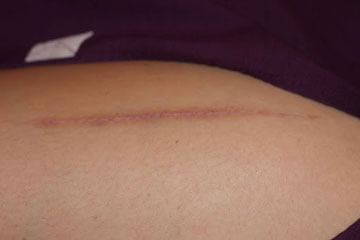- June 15, 2023
- Keloid Specialist
- Comment: 0
- blog
Keloid Scars: Symptoms, Causes & Treatments | Keloid Specialist
Introduction
Keloid Scars are raised, thickened areas of scar tissue that extend beyond the boundaries of the original wound. Scars are a natural part of the body’s healing process, but sometimes, they can take on a different form known as keloid scars. Keloids are raised, thickened areas of scar tissue that extend beyond the boundaries of the original wound. They can be bothersome and affect a person’s selfesteem. In this blog post, we will explore the causes, symptoms, and risk factors associated with keloid scars to help you better understand this unique type of scarring.
- What are Keloid Scars?
Keloid scars are an abnormal response to skin injury or trauma. Unlike normal scars that fade over time, keloids continue to grow, often becoming larger than the original wound. They are characterized by their raised, thickened appearance and can be smooth, shiny, or have a fibrous texture. Keloid scars may vary in color, ranging from pink to dark brown.
- Causes of Keloid Scars
The exact cause of keloid scar formation is not fully understood, but several factors contribute to their development:
- Genetic Predisposition: Keloids tend to run in families, suggesting a genetic component. If a close family member has a keloid scar, you may have a higher risk of developing one too.
- Skin Trauma: Any type of skin injury can potentially lead to keloid formation. This includes surgical incisions, burns, cuts, acne scars, vaccinations, and even minor skin abrasions.
- Overproduction of Collagen: Keloids form when there is an excessive production of collagen during the wound healing process. The body’s response to injury becomes imbalanced, resulting in an overgrowth of scar tissue.
Symptoms of Keloid Scars
Keloid scars exhibit specific characteristics that differentiate them from other types of scars:
- Raised and Thickened: Keloids extend beyond the boundaries of the original wound, creating a raised, elevated area of scar tissue.
- Irregular Shape: Keloids can have an irregular shape and may spread beyond the initial injury site.
- Discoloration: Keloids can be pink, red, or dark brown, and their color may differ from the surrounding skin.
- Itching and Discomfort: Some keloid scars can be itchy or painful, particularly when exposed to friction or pressure.
• Risk Factors for Keloid Scars
Certain factors increase the likelihood of developing keloid scars:
- Skin Type: Darker skin tones, including individuals of African, Asian, and Hispanic descent, have a higher risk of keloid formation.
- Age and Gender: Keloids are more common in individuals between the ages of 10 and 30. They also tend to occur more frequently in women.
- Location of the Injury: Certain areas of the body, such as the chest, shoulders, earlobes, and upper back, are more prone to keloid formation.
- Hormonal Influence: Hormonal changes during pregnancy, puberty, or menopause can influence the development of keloids.
• Conclusion Keloid scars can be a source of physical and emotional discomfort for individuals who experience them. Understanding the causes, symptoms, and risk factors associated with keloid scars is essential for early recognition and appropriate management. If you have concerns about keloid scars, it is recommended to consult with a dermatologist who can provide a proper diagnosis and recommend suitable treatment options. Remember, there are effective treatments available to help manage keloid scars and improve both physical comfort and self-confidence.

